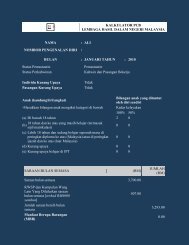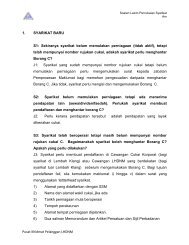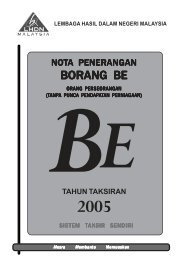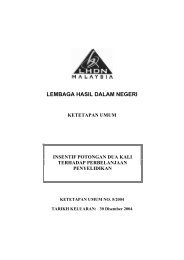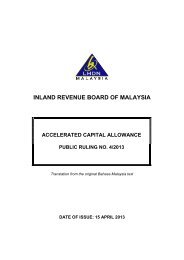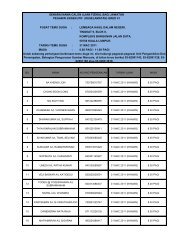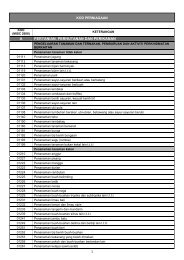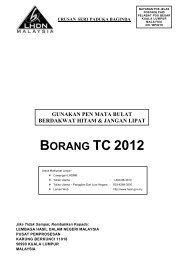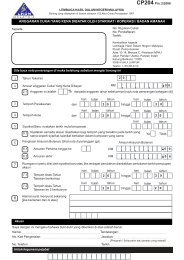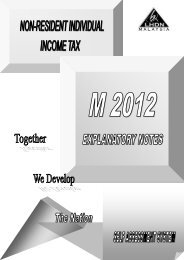Tan Sri Mohd Sidek Hassan
Tan Sri Mohd Sidek Hassan
Tan Sri Mohd Sidek Hassan
- No tags were found...
You also want an ePaper? Increase the reach of your titles
YUMPU automatically turns print PDFs into web optimized ePapers that Google loves.
<strong>Tan</strong> <strong>Sri</strong> Dr. Wan Abdul Aziz Wan AbdullahWHY are some countries rich while others remain poor? Whyare some countries converging and some diverging from thericher nations? More ink has been spilt on these issues than any otherin development economics.The Washington Consensus has long deliberated on these issues but to date has notreached a common consensus to explain the divergence and suggest viable policyprescriptions. For analytical convenience, economists have come up with growthmodels, a simplified representation of an economy, which helps one understandhow the economy functions. These models provide insights into issues that remainuppermost in the minds of policy makerswhen formulating growth strategies.Malaysia has evolved from a low- to mediumincomeeconomy. Post independence, felt strongly for the needThus, the Governmentthe economy was heavily dependent onprimary commodities, namely rubber andto diversify the economytin. Between 1957 and 1960, agriculture was and reduce dependencethe largest sector, providing employmenton rubber and tin tofor about 58% of the labour force andaccounting for about 47% of total output. enhance income andRubber alone accounted for over 25% of wealth generation. Thenational income, nearly 30% of employment emphasis was, therefore,and about 60% of exports. During the sameperiod, the mining sector, predominantlyon developing othertin, employed 3% of the labour force suitable agriculturaland accounted for 25% of exports. Withcrops and embarkingrubber and tin accounting for 85% of totalexports, the entire economy was extremely on downstreamvulnerable to fluctuations in commoditymanufacturing activities.prices. During the commodity-driven phasebetween 1957 and 1970, per capital grossnational income in nominal terms increasedat a low annual rate of 2.4% from RM788 to RM1,070. In addition, there was widedisparity in income and poverty was prevalent.Thus, the Government felt strongly for the need to diversify the economy andreduce dependence on rubber and tin to enhance income and wealth generation.The emphasis was, therefore, on developing other suitable agricultural crops andembarking on downstream manufacturing activities.93



